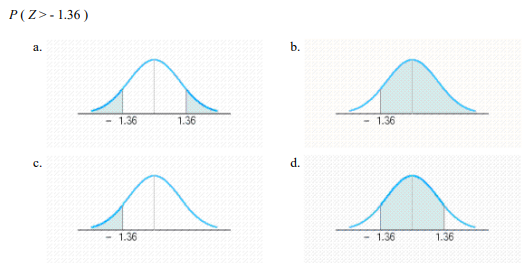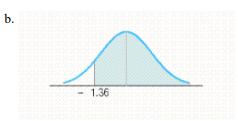Make a sketch of the area under the standard normal curve corresponding to the given probability.


You might also like to view...
Find the quadratic approximation of f at x = 0.f(x) = 
A. Q(x) = 9 - 
B. Q(x) = 9 + 
C. Q(x) = 9 + 
D. Q(x) = 9 - 
Solve the equation in the complex number system.x3 = -27i
A. 3(cos90° + i sin 90°), 3(cos 180° + i sin180°), 3(cos 270° + i sin 270°) B. 3(cos 30° + i sin 30°), 3(cos 60° + i sin 60°), 3(cos 90° + i sin 90°) C. 3(cos 90° + i sin 90°), 3(cos 210° + i sin 210°), 3(cos 330° + i sin 330°) D. 3(cos 210° + i sin 210°), 3(cos 270° + i sin 270°), 3(cos 330° + i sin 330°)
Solve the problem.Find a formula for the viewing area of a television screen in terms of its diagonal d and the angle ? shown in the figure. Write the formula using a single trigonometric function. Use the formula to find the viewing area for a 34-in.-diagonal television for which  Round to the nearest tenth.
Round to the nearest tenth. 
A. A = d2 cos(2?); 236.4 in.2
B. A = d2 sin(2?); 1,131.6 in.2
C. A =  sin(2?); 565.8 in.2
sin(2?); 565.8 in.2
D. A =  cos(2?); 118.2 in.2
cos(2?); 118.2 in.2
Determine whether the equation is linear or nonlinear. x + 3 = 0
x + 3 = 0
A. linear B. nonlinear